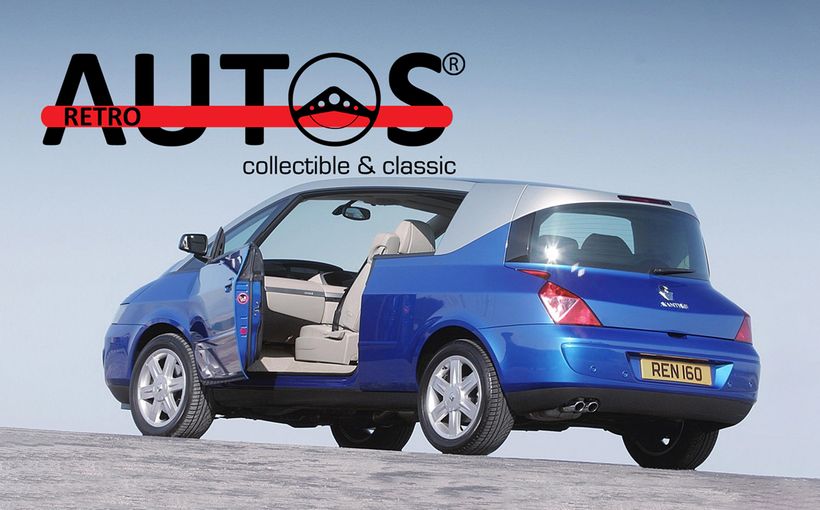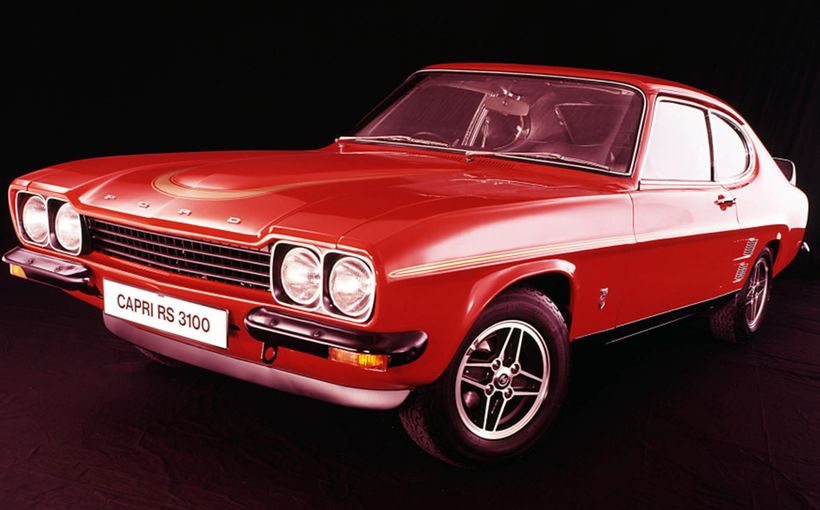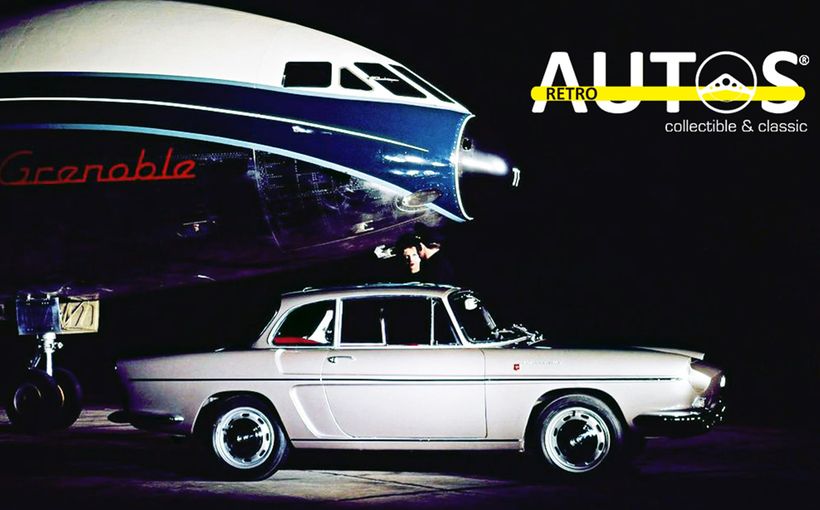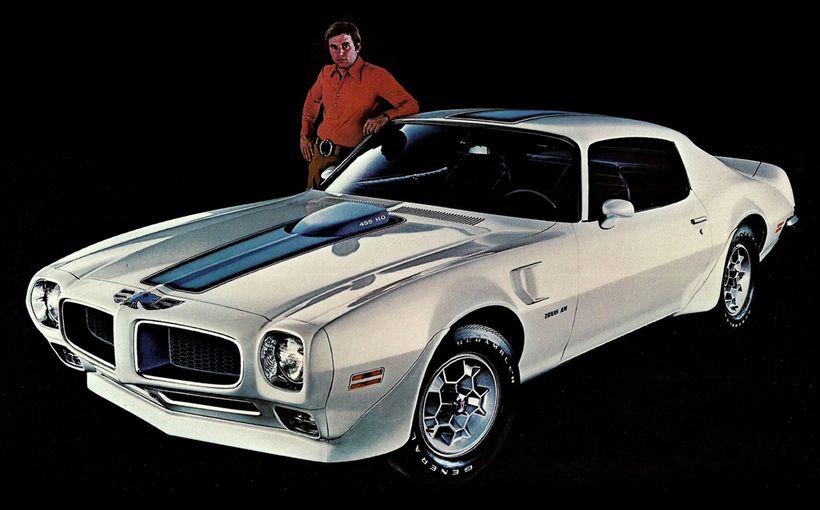Renault 12 Gordini: Front paws in need of lion claws

Renault Australia’s victory over the Holden Dealer Team in the 1970 Australian Rally Championship, using its potent R8 Gordinis, had such a positive effect on image and sales that the company was keen to launch another assault in 1972 with its new front wheel drive Renault 12 Gordini – but this time Holden’s lion was roaring and ready to pounce.
A year is a long time in motor sport and by the time the new works-backed Renault 12 Gordini attack led by 1970 ARC champion Bob Watson was underway, Holden’s LC Torana GTR XU-1 had more than a season of intense competition and development behind it.
This resulted in a fast, agile and rugged rally weapon that clinched the 1971 ARC title. And for 1972, the LC had been replaced by the latest LJ model, powered by a larger and more powerful 3.3 litre (202 cid) version of Holden’s triple-carbed hot six that promised to make life even harder for the competition.
Even so, given Renault’s audacious 1970 ARC win and the French marque’s renowned commitment to competition excellence, its latest rally weapon was considered a threat to HDT’s dominance even before the first shot was fired in the 1972 ARC war.
The new Renault 12 sedan in standard form was an advanced car for its time and, with a very light kerb weight below 1000 kgs, was considered an excellent starting point for the development of another Gordini-tweaked competition car.

Released in Australia in 1970, the front-engined/front wheel drive Renault 12 was designed to fill the gap between the rear-engine/rear wheel drive R8/R10 models and the larger front engine/front wheel drive Renault 16.
The original Renault 12 featured a longitudinally-mounted 1289cc four cylinder pushrod engine (early Australian models had a unique 1251cc version to meet local tariff laws) and four-speed manual gearbox in a sharply styled and rigid unitary body. The entire engine and clutch housing were located forward of the front axle line.
Supple long travel suspension via front coil-over shocks and a well located hollow beam rear axle combined good ground clearance with excellent handling, enhanced by responsive rack and pinion steering and powerful front disc brakes.
Given the success of the R8 Gordini in 1970, in which Bob Watson and navigator Jim McAuliffe toppled the HDT’s mighty GTS Monaros and Torana GTRs, the impending debut in Australia of the latest hot Renault in the ARC created great interest.
Although not sold here, the Renault 12 Gordini was seen as another ‘halo’ car by Renault Australia. It was hoped it could establish a similar sporting profile to that of the R8, at a time when emerging Japanese brands like Datsun and Mitsubishi were making their presence felt in local rallying and winning plenty of admirers in the youth market as a result.

Like the R8 version, the Renault 12 Gordini was designed by Amedee Gordini, the brilliant Italian-born Parisian with a rare genius for extracting staggering levels of performance from Renault’s production-based engines.
Gordini replaced the 12’s 1289cc engine with a larger 1565cc unit based on the all-aluminium Renault 16 engine. Loaded with quality internals and fed by a pair of 45mm DCOE twin-choke Webers, this big breathing, pushrod, two-valve-per-cylinder, inline four capped with a finned aluminium rocker cover was claimed to produce 125 bhp (more than double that of the standard Renault 12) and propel the little Renault sedan to a top speed of 185 km/h.
The new Gordini also featured a close ratio five-speed gearbox and other competition upgrades including four-wheel disc brakes (ventilated front, solid rear) and more than double the standard fuel capacity thanks to a huge 89-litre tank. No-frills interior trim and removal of the front and rear steel bumpers minimised weight.

The Australian RHD Gordinis
According to 1970 ARC champion Bob Watson, who also managed Renault Australia’s competition program at the time, the company shipped in a small batch of new left hand drive Renault 12 Gordinis with a plan to again dominate Australian rallying at state and national level.
“The first one came out for the Dulux Rally in 1971 (finished 4th) and in early 1972 another four cars arrived, so we ended up with five in total,” he told the Shannons Club
“The plan was that one car would go to each (Renault driving) state rally champion from the year before, so one went to Rod Slater in Western Australia, another went to Tom Barr-Smith in South Australia, Bruce Collier got the NSW car and the Queensland car went to Brian Michelmore.
“As they had to be road registered for rally use, they were all converted to right hand drive at the competition department in Melbourne. The car I drove in the ARC was also prepared there under Enzo Dozzi, while the others were sent to each of the state guys to do their own preparations.”

According to Watson, the works-prepared Renault 12 Gordini engines like the previous R8s were upgraded with factory developed rally kits, which were boxed and shipped direct to Australia from Renault’s competition department in Europe.
These competition-grade components included 11.5:1 high compression pistons and new cylinder sleeves with larger bores that raised the stock Gordini’s capacity from 1565cc to 1596cc.
Combined with wilder camshaft profiles, stronger valve springs and special exhaust extractors, the rally kits raised the power output from 125 to a piping hot 160 bhp at 7,200 rpm, along with a useful increase in torque.
“When we developed the first car for the Dulux Rally in 1971, we found that the standard air cleaner housing on the car was very restrictive,” Watson said.
“I think we got about 12-15 extra horsepower just by changing it to a more open set-up. It was very cramped because the Gordini engine had two big side-draught Webers hanging off the side of it and they were hard up against the inner guard. It was difficult to get a decent air filter onto them but we worked it out.”

1972 ARC: Toranas too strong
Despite thorough preparations by Renault Australia, the more powerful and theoretically faster Renault 12 Gordinis were a disappointment. The 1972 edition of the Australian Motoring Yearbook neatly summed up the Renault works team’s difficult season:
“The failure of the front wheel drive R12 Gordini to emulate the convincing successes of its victorious predecessor, the R8 Gordini (rear engine, rear wheel drive) is not easily explained.
“On paper it looks to be a faster car but, in practice, it just has not been getting the results. Occasionally the car, in the hands of Bob Watson, has shown flashes of brilliance, but the results are not there.
“Of course much of everybody else’s failure can be laid squarely on the shoulders of the Torana XU-1 and the Holden Dealer Team, led by the legendary Harry Firth. They are simply too fast, too reliable, too well driven and navigated and too well organised to give anyone else a chance.”
And that was the 1972 ARC in a nutshell. HDT’s Toranas won five of the six events, with 1971 champions Colin Bond and George Shepheard claiming their second ARC title in succession.
Best result for the Renault 12 Gordinis was a second place for Tom Barr-Smith/Rob Hunt in the South Australian round (ARC rounds often doubled as state championship rounds). Watson and Geoff Thomas finished a frustrating third at Victoria’s Akademos Rally, after sliding off the road on the final stage when equal on points with the leading XU-1s.

On reflection, Watson said it was a combination of the Renault 12’s front wheel drive configuration, technical problems with the gearboxes and the formidable speed and reliability of the XU-1s that conspired against the Gordinis in 1972.
“They weren’t really competitive against the Toranas,” he admitted. “By that stage the XU-1s were quite highly developed and Harry had discovered these Goodyear Ultragrip tyres which he got from the States that were a lot wider than anything else available and gave them a lot more traction.
“We were really battling with only 1600cc. And with front wheel drive, the 12’s were no good at going up hills either. In events like those in the (Victorian) goldfields country, where the forests were generally flat and the roads were very twisty our car was just as quick, but we couldn’t match the power and traction of the Torana going up hills.
“In events like the Snowy Mountains or the Alpine, we had no chance. Plus they were using locker diffs by then and we didn’t have a locker or even a limited slip diff that was suitable.
“Another problem with our car was that it was geared too high, because it was actually built for racing rather than rallying. So what we ended up doing in the ARC was replace the close ratio five-speed gearbox with a four-speed because we could get a much lower diff ratio for that. You never used fifth anyway, so that was no great loss.

“We never had much luck with the gearboxes though. Peter Hollinger had a go at building a couple for us, but the light alloy casing distorted too much when it got hot and all the clearances went haywire, so we were breaking gears and crown wheels and pinions and all sorts of things. Peter said he just couldn’t make it work using that gearbox casing because it distorted too much, but under the rules we had choice.”
At the end of a disappointing season, Renault Australia’s head office decided to withdraw from direct involvement in motor sport and shut down its competition department in early 1973. After enjoying such great success in 1970, it was a bitter pill for Watson to swallow.
“The R12 Gordini was never as successful as the R8 Gordini which is why it didn’t last long (in production),” he lamented.
“At the end of that year I think Renault Australia was also really starting to struggle in the market. They replaced the 12 and 16 with models that were much inferior plus there was a big jump in price, so a lot of people just dumped the Renault brand and went and bought Japanese cars instead.”

Rallycross weapon!
In addition to forest rallies, the high-revving Renault 12 Gordini followed in the muddy wheel tracks of the R8 in tackling rallycross, when this exciting new brand of motor sport was at its peak of popularity in Australia in 1972-73.
Rallycross consisted of four cars from a standing start competing for several laps over a man-made course that was partly bitumen race track and partly dirt, with large jumps and water splashes added to provide some spectacular action (see Youtube clip at the end of this story).
In a stripped-out, lightweight R8 Gordini, Bob Watson won several events and posed the greatest threat to Peter Brock during 1970-71, who in his supercharged HDT LC Torana GTR had become known as the ‘King of Calder’ due to his dominance of the rallycross meetings held at the Melbourne circuit.
Watson updated to the latest Renault 12 Gordini for 1972, as rallycross was seen as an excellent promotional tool for Renault, playing the part of ‘David’ against the ‘Goliath’ that HDT’s purpose-built 320bhp supercharged Torana truly represented!

“To build the rallycross car, we just started with a new body shell we took straight off the assembly line so it would be as light as possible without any joint sealants, anti-drum compounds and all that. We then put a roll cage and all the 1.6 Gordini running gear into it and had a crack at Brock,” Watson recalled.
“There was one meeting (see Youtube clip) where Peter and I had a real ding-dong struggle and after I went over the jump the last time and came onto the bitumen to go down to the finish line, he had a big lose, went sideways and I bloody near got him - he beat me by about a metre! It was probably the closest finish there’s ever been in rallycross.
“In 1973 we followed HDT’s lead and supercharged the engine using a Rootes-type blower. It was good and it gave a lot more power. From memory it went from 160bhp up to about 200 bhp, but of course you needed good traction to fully benefit from it.”

According to Watson, the Renault 12 Gordini’s major drawback in rallycross was again front wheel drive as it suffered the handicap of rearward weight transfer during the standing starts. This lifted the front end slightly, causing the front wheels to spin too much. Once up to full speed, though, the car was very quick.
“It wasn’t bad but it just missed out by a little bit off the start line and when you were up against Brock in that supercharged Torana, with its dual rear wheels and all, he’d always beat us into the first turn.”











Comments
Landscaper
Hi Mark,
Do you have anything on the Renault Gordini R10 and other Renaults in the Armstrong 500 from 1958 - 1962 ?
My father John Connolly drove with Rex Emmett and a bloke you may have heard of Brian Sampson,
I would be wrapped if you or anyone had any info or where I could get any from.
P.S. Love your articles.
Kindest Regards
Landscaper
landtech@optusnet.con.au
mambo111
The old rear wheel drive reno brick was amazing, how it kept the torana honest. [edge of the seat ] Would we be a great deal better today? Is My memory in fast forwad ? No chance to get a cupper once they started. It seemed like pure animal, confined in a small space You get the big picture. When You see this type of racing in england it is more like a smashup derby. AU was a better spectacle............Steve
MarkOastler
I'm not aware of Renault having any plans to enter Group C touring car racing with the R12 Gordini. They would have struggled to meet the minimum number of road cars required to be sold here. And even if they had met that requirement, the R12 Gordini would not have been competitive in the 1301-2000cc class against rivals like the Alfa Romeo GTV, Escort Twin Cam etc.
dar1974
It was a shame Renault never got to do Bathurst with the R12 Gordinis did Renault Australia plan to switch to touring car racing. It was a shame that they never got to do so I could not help thinking what might have been if a R12 Gordini was developed to the Gr C regulations. However it would be 1997 before a Renault appeared in the Bathurst 1000 in the form of the Laguna
Philwr
I remember around 1970 a competitor restored an R8 for rallying in the Newcastle area. The car restoration and preparation was a work of art. The first rally after restoration was with either the Newcastle Sporting Car Club or the Newcastle chapter of MGCC. Unfortunately the R8 met a very sad end in the first competitive stage! I never saw the car again!
Motown1
I love the old footage. Great to see the Renault closing in on Brock's Torana.
LilFellaofOz
I remember reading about the earlier Gordinis. Came in one colour, looked like a box and went like rockets. I still have the wheels test between the Gordini, Cortina 500, the Cooper S and I think the Datsun skyline. Those were the days.
MarkOastler
Thanks for your feedback guys. Ownership experience really adds a lot to these stories. Outstanding seats, the ability to cover all road surfaces with ease and rugged chassis and drive-trains that could withstand years of hard labour seem to be consistent Renault themes. The shortcomings which became apparent at the top level of rally competition were not an issue for the average Renault 12 owner. It was an outstanding car in so many ways and deserved its many accolades at the time.
Antechinus100
Got a 12TL Sedan in 1971, previous car a Holden FB Ute, very rare these days. The way the suspension soaked up gravel road corrugations was unique, the !6TS was probably similar. Run the motor in overnight for the 1st service, the 2nd 3 days later. As a result the thingy revved to 7009rpm - checked that on the Amaroo hillclimb, glanced down on the tacho and saw the needle at the stop. Had some fun at traffic lights with more powerful cars, even GTR Toranas. Stayed with them until I heard them change gear then flattened it., of course they caught me. Kept it until 1978,it rusted under the dash & plenum chamber. Got a Subaru 16DL. Primitive but quite a lot of power. Torque steer was unpleasant.
BillW41
I bought a Renault 12 TL station wagon new in 1974. The handling and comfort after a diet of Rootes Group, BMC, Ford and Holden products were a revelation. It was the first car in which I was able to drive from Adelaide to Melbourne without arriving there with a sore bum! Sold it after 18 months to buy a Datsun - not sure why (although I recall rust manifesting in the door pillar joins), but the Renault remains the only car on which I ever made a profit: a whole $300 more than the original on-road purchase price. The Datsun's seats were like boards by comparison.